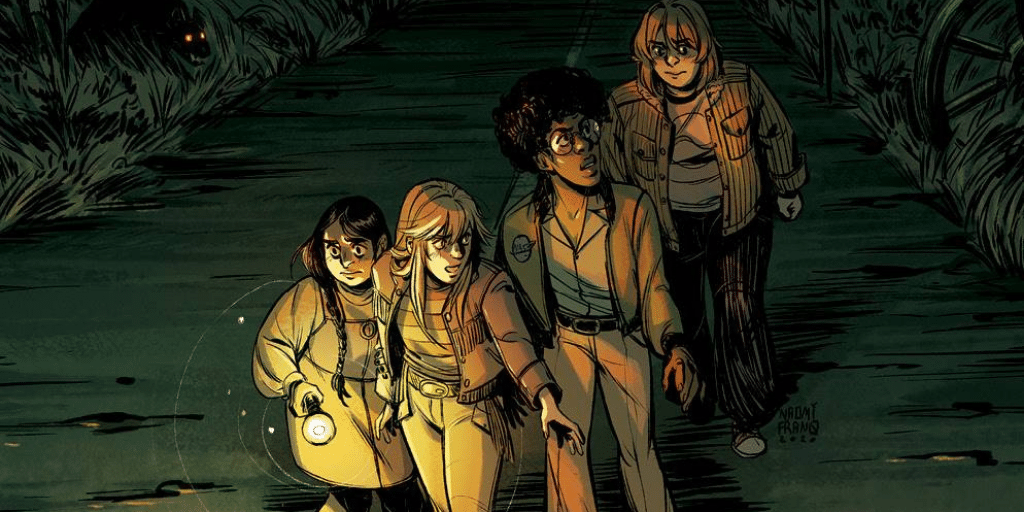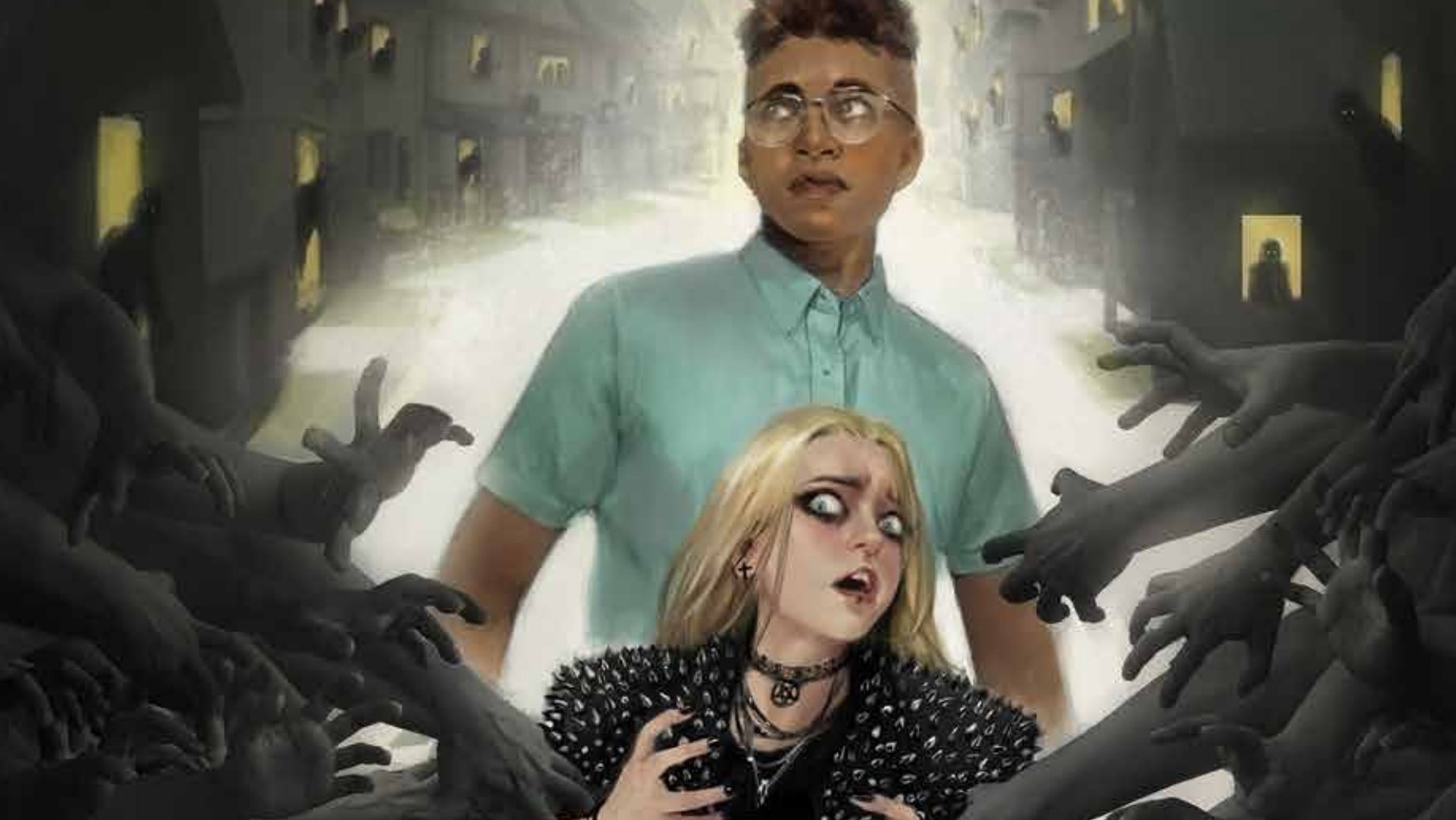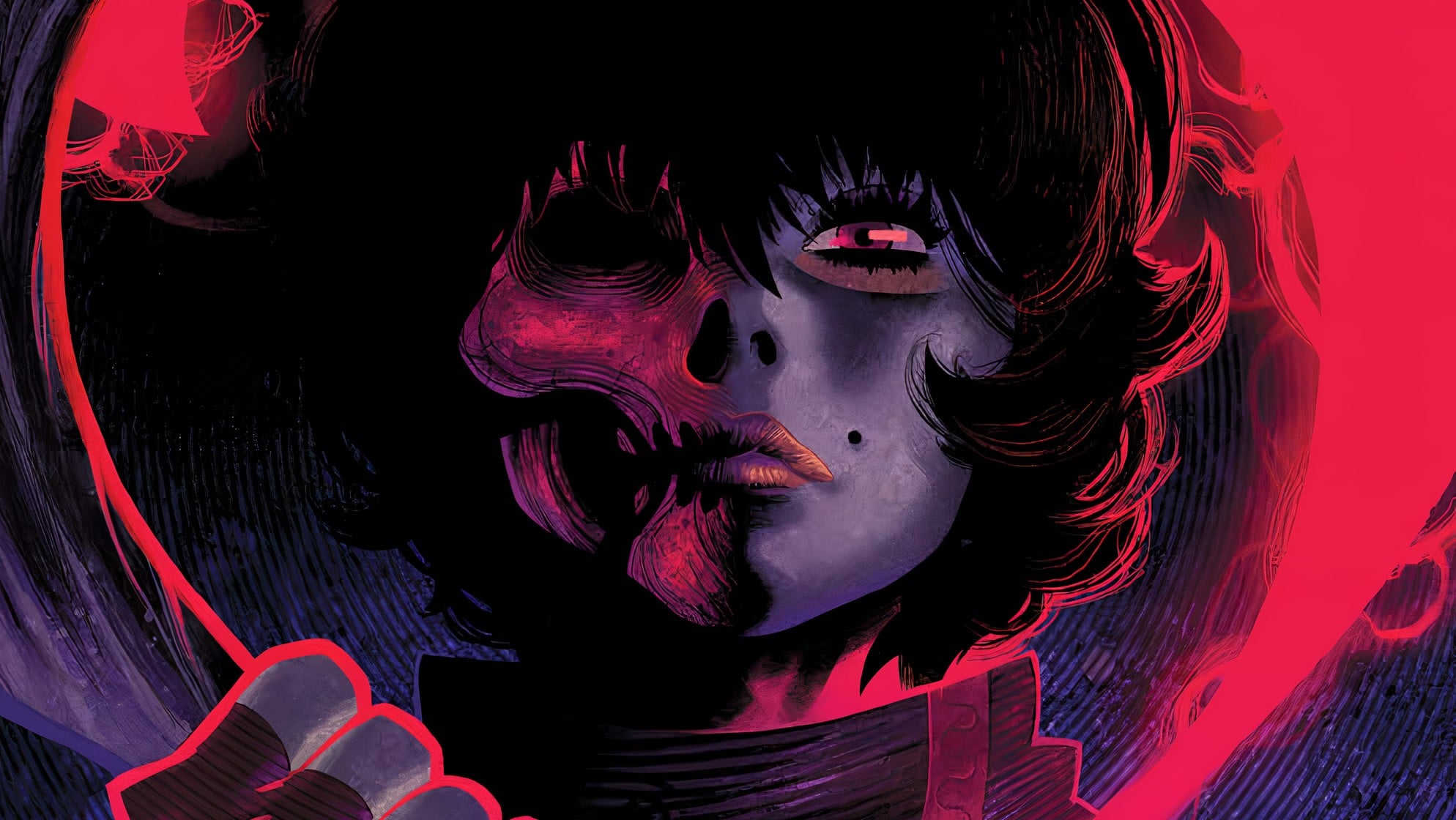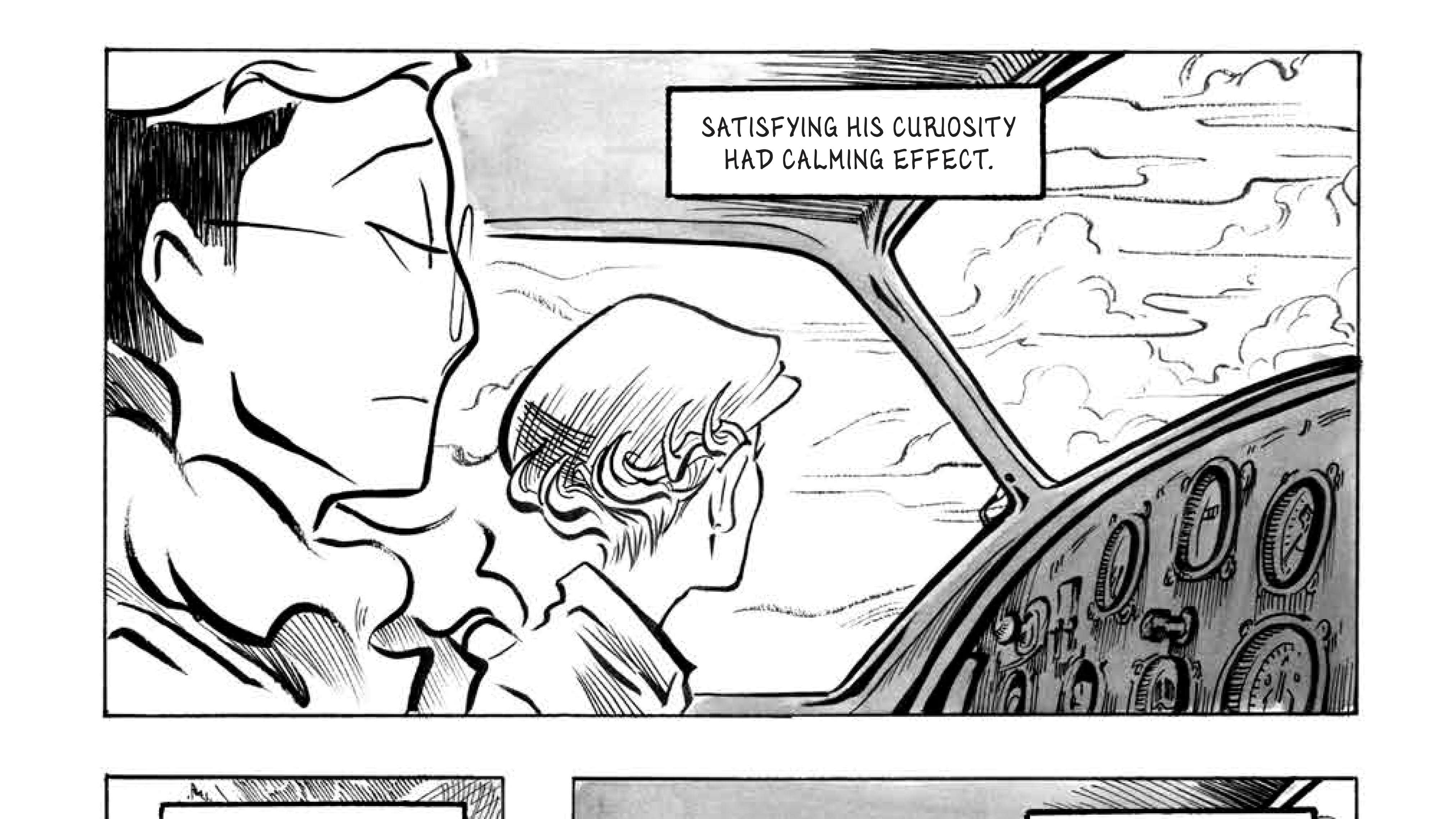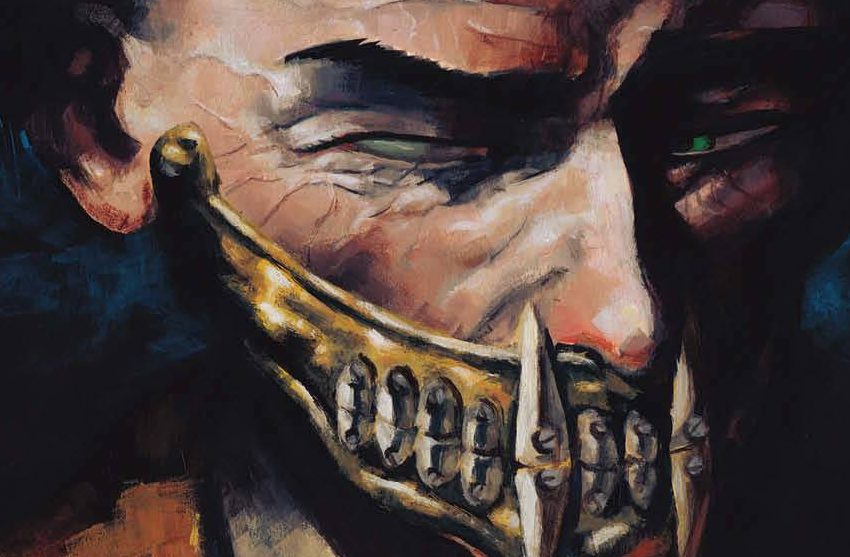August, Rylee, Cora & Jennie have organized a “Spook Tour” with their classmates on the most haunted, demon-infested stretch of road in America to fund attending the concert of their dreams.
When their visit turns deadly, these four friends race to rescue the missing students … before the town tears them limb from limb.
Now they must slay the evils roaming Proctor Valley Road … along with the monsters lurking in the hearts of 1970s America.
Written by Grant Morrison and Alex Child, drawn by Naomi Franquiz, colored by Tamra Bonvillain, lettered by Jim Campbell and published by BOOM Studios.

Ritesh Babu: There seems to be a big wave of horror comics going around now in the American direct market. From Something Is Killing The Children (another BOOM launch) to Department of Truth, Blue in Green, Redfork, Razorblades, Home Sick Pilots and so many more, horror has been the name of the 2020s indie comics game, apparently.
And so we begin, with Proctor Valley Road #1! What’d you make of this, Ken?
Kenneth Laster: Excellent call on the rising horror trend! It’s an interesting time for me as a self-proclaimed coward, but the medium of comics is far more forgiving for me when it comes to the genre and that tracks to Proctor Valley Road as well. I thought this first issue was a really deft balancing act of YA coming of age that throws back to a lot of classic aesthetics in that genre, as well as being an effectively scary horror comic with some commentary on the period of the setting. What were your first impressions as the resident GMo expert? Is this title a shift from their usual purview or right on track? My knowledge of indie Grant Morrison is severely lacking.
RB: My impression when I read the previews and announcements was that this clearly wasn’t a Grant Morrison original idea. But there is decidedly a lot of Grant Morrison in it, which is interesting. It’s where the co-creation component comes into play. This book reads differently and has a different sense of rhythm while having their quirks (notice how the book cuts and leaps at certain moments).
Now as to not be vague and actually verbalize the “Grant Morrison in it”: It’s a comic about a bunch of teenagers who grew up in the ‘70s, which is the era they grew up in. It’s about, specifically, a teenage musician as lead, which is what they were. And that feels important to note, given the book opens and ends on Janis Joplin’s Kozmic Blues. (This musical obsession defines a lot of their work and would be part of how they bonded with Gerard Way.)
But beyond that, it’s a book about cryptids. That feels like it’s right in their wheelhouse.

KL: Ah, very interesting! I was curious about the opening lyrics. I think the collaboration aspect is super interesting because I definitely felt a creative push and pull at some points throughout my reading. It’s kind of difficult to speak on dialogue/script without being super familiar with Alex Child and how their writing gels or doesn’t gel with Morrison. I felt that there was occasionally a disconnect between Child and Morrison and Naomi Franquiz and Tamra Bonvillain. Franquiz and Bonvillain’s artwork is gorgeous to look at and expertly tells the story, but the tone of their artwork weirdly feels younger than the story being told, if that makes any sense. Not to be puritanical, but the book is a bit more crass than I was expecting with the artwork. However, that does work a bit with the tone as well. The more “crass” dialogue is from juvenile characters in a coming-of-age book, so ultimately it works, but it does take a bit of an adjustment.
RB: Haha, yeah. I think the impression Franquiz and Bonvillain’s warm, lovely work gives is that this is a very “young” book, sort of an all-ages thing you could fit in with certain other BOOM offerings. But while it does star YA leads and seems like it is that, there is a reason it’s got the mature rating. Which isn’t to say it can’t be for a YA audience, but it isn’t quite what I think it may look like on the surface.
It’s a fun combo, I reckon. What I like about it is, usually these kinds of period-piece stories tend to be about nostalgia. A sweet aching sensation, with a longing for the past. But rather, while this looks as warm and delightful as you might expect from a reality of longing, it’s instead contrasted with the backdrop of dreadful racism, sexism and monsters, both literal and figurative. The spectre of the Vietnam war haunts the text.
The book might trick you into assuming it’s about nostalgia, but in the end, it’s a comic wherein rightwingers try to insult a person of color for criticizing America and its white populace by using “communist” as a pejorative, wherein people of color flip off old white bigots and say, “Death to tyrants.” It’s a comic about how in the supposedly bright realm of the past, the past, as we see it in our rearview mirror, is haunted.

KL: That’s a really good read on it! A good look at art style is informing tone and theme. I was also interested in the book’s Black characters, particularly in the wake of the online discussion of Wonder Woman: Earth One recently. I am at a real impasse at how Jennie and her brother are portrayed. I like what they represent and what they say, but the way they are portrayed and speak really feel like they are too cool for this comic in a way. The main cast are basically a scramble of different (lovingly) garbage children, but Jennie and her brother fill the role of the “cool” Black friend in a way that kind of stands out. Jennie’s brother gets a real “and everyone applauds” moment at the end of his speech. Again, it’s hard to criticize, because it would be more noticeable to just ignore race, and it would be weird to have them just *take* it, but to have both Black characters have equally “badass” responses to regressive politics feels more like a white person’s fantasy than it does good representation.
RB: All very true. There is very much a white lens on it (see the usage of the G-slur from the bigots), and it is the sense of writing about the idea of the thing, rather than having lived the thing itself, in a way. (Though I do want to note, series artist Franquiz is not white and is a Latina.) What I really want to see, moving forward, is Jennie and her brother (as well as Cora, the one indigenous character who the story has in the role of Spooky Storyteller) getting much more. Much, much more than just the things that white people largely associate or feel to be associated with their backgrounds, whether it be through stereotypes or stock characters. It’s a first issue, and I do really like all the characters, but I would want to see the PoC characters get more. Give me Jennie and her brother in contexts that aren’t just them angry, let them have the room, the breathing space, to experience and cover the gamut of things that the white characters get to. Same with Cora. It’s a start, and I hope that moving forward, the comic really gives them the time and room to shine and assert their perspectives without being put in a box.
KL: Very true! First issues are always a weird character showcase, but again, thanks to Franquiz’s designs for these characters, I’m endeared to those alone. Also apparently there’s a monster in this comic? Kinda spooky, huh?

RB: Spooky indeed! Franquiz’s designs for all of the Proctor Valley Cryptids are really good, even if they’re not all shown in this debut issue. I want to note here that these are all based off very much real stories and tales that have been spun by people in regard to this place. Proctor Valley Road is a real place; it’s a spooky place. It’s the place you get creepypastas about. And we get to see Franquiz and Bonvillain’s take on all of them across the series.
The book seems to be picking and choosing from the various things that have been said to inhabit that tumultuous terrain, settling on four picks for this miniseries. Thus we’ve got The Proctor Valley Monster (The Big Minotaur fella), The Proctor Valley Coyotes (who can walk on two legs), The Proctor Valley Hitchhiker (Scary Ghost Lady) and The Demon Car (self-explanatory).
KL: I think my favorite sequence in the book was the three panels of the minotaur (I think it was the minotaur) crossing the viewer’s sight line. Very effective and very creepy. I think on first read, I didn’t connect the different depictions of the monsters, and I kind of thought it was the ol’ monster-influenced-by-the-stories-told-by-it type deal, but I’m not entirely sure that’s the case. I do enjoy not knowing much about these cryptids, and I don’t feel an urge to know about their deal. I think it’s great that they are so effective at being genuinely scary, and I applaud the creative team for pulling off the creepy details that get the hairs on the back of the neck standing.
RB: Haha, you mentioned comics horror earlier, and it’s a tricky thing for me, because I tend to be “scared” more by very concrete things (see Naoki Urasawa’s Monster) or certain ideas, which feel tangibly true, rather than the action-horror that is more prominent. So my engagement with that brand of horror is very much based less on “Did it scare me?” and more so the “everything else” of it, the other emotions it made me feel. That’s the fun of horror, as there is that breadth to it.
Which is to say, when the monsters came and blood came out, I was like YEAAAAH BABY. GET THESE GUYS. I am that guy who is watching with a grin and cheering. I do so love the catharsis of horror.

KL: Haha, let the bodies hit the floor, as they say. I forgot this was a horror book for a second and really thought “Geez, these guys suck” and then they got got and I thought, “Oh yeah, they can not be here anymore.” The magic of horror! But again, horror is a really interesting genre! I love to read *about* it more than I like engaging with it, primarily in film. Like Get Out is an excellent example. I loved the conversation around it, but I had to fast forward a lot in the broad daylight to get through it. I think one of the big things in this that I’m excited about is to get a clearer sense of the “thematic” monster as time goes on. I think we’ve touched on a lot of interesting elements that Morrison and Child bring to the table, but I’m interested to see where they hang their hat. Vietnam and the threat of the draft seem like the top contender, especially with the ending, but I’m super interested in seeing how they get tied closer together, if at all.
RB: For sure. How it all weaves together is something I’m quite keen on. You asked my read earlier, specifically through the lens of Morrison. And where I think I land is … this is Morrison returning to their roots. They were raised on, and wanted to become a writer, because of Enid Blyton works and Alan Garner stories. And this feels like the purest return to that. If The Green Lantern and Wonder Woman are a return to their career’s roots in space opera and pulpy sci-fi at D.C. Thomson’s Starblazer (a genre-space they’ve said they’ve not historically been a fan of), this plays to me like a return to the kind of “Kids In A Small Town Solve A Weird Mystery” that made them want to write at all.
I’m reminded of how they were supposed to do a Scooby-Doo pitch in the ’90s? But yeah, this feels like a return to basics, in some ways. And that tracks, given this is their most “grounded” and “small” story in ages. And if Garner’s work was primarily about the myths of the British Isles as backdrop, this seems to be myths of America, which are not superheroes as some believe, but its urban legends, its wars. That is its cultural history and myth.
That said, Child is an important figure here, and brings out a wholly different flavor, too. It helps when there’s a much younger co-writer for someone in their 60s. It’s Child’s first comic, but I dig their voice and how it seems to vibe with everyone else’s. I hope this isn’t their only comic work. I would like to see more from them in the future.
But in regard to collaboration, I would also like to shout out Jim Campbell, who in my experience has consistently been fantastic. He lettered my favorite book of last year (Kill A Man), and I think this might be his first collab with Morrison, and lettering their words? It’s an interesting matchup.
All that said, I think we can agree though that the real celebrities of this issue are, indeed, Franquiz and Bonvillain. Just a hell of a team.
KL: Ritesh, I cannot take the information that Grant Morrison was supposed to do a Scooby-Doo pitch. This is something I will think about daily from now on, and I thank you.
But I wholly agree, this creative team really brought their A-game on all fronts. Campbell’s lettering definitely pops out as exceptional on another glance, and Child is definitely an interesting figure to watch out for. Ultimately, I think Proctor Valley Road is going to be an interesting book to watch both for fans of Morrison and fans of new horror in the indie comics realm.


